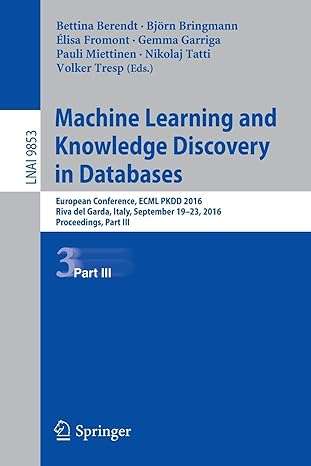Question
C++ Consider the following code: 01: list folderol (int n) 02: { 03: set t, u; 05: 06: while (t.size() < n) 07: t.insert (rand()
C++
Consider the following code:
01: list folderol (int n)
02: {
03: set t, u;
05:
06: while (t.size() < n)
07: t.insert (rand() % (2*n));
08: while (u.size() < n)
09: u.insert (rand() % (2*n));
10:
11: list L;
11: for (int i: t)
12: if (u.count(i) > 0)
13: L.push_back(i);
14: return L;
15: }
rand() returns a random non-negative integer and runs in `O(1)` time. Assume that each possible unsigned int value is equally likely to be returned on any given call to rand().
Match the line numbers below to the closest correct complexity expression, giving the single-letter identifier for your chosen complexity.
A: O(1)
B: O(log n)
C: O(sqrt(n))
D: O(n)
E: O(n log n)
F: O(n sqrt(n))
G: O(n2)
H: O(n2 log(n))
I: O(n2 sqrt(n))
J: O(n3)
K: none of these
If the line numbers are preceded by "Avg", give the average case complexity. Otherwise, give the worst case complexity. Line 7:
Avg Line 7:
Lines 6-7:
Line 13:
Line 12:
Avg Line 12:
Lines 11-13:
Avg Lines 11-13:
Line 14:
Avg Line 14:
Step by Step Solution
There are 3 Steps involved in it
Step: 1

Get Instant Access to Expert-Tailored Solutions
See step-by-step solutions with expert insights and AI powered tools for academic success
Step: 2

Step: 3

Ace Your Homework with AI
Get the answers you need in no time with our AI-driven, step-by-step assistance
Get Started


